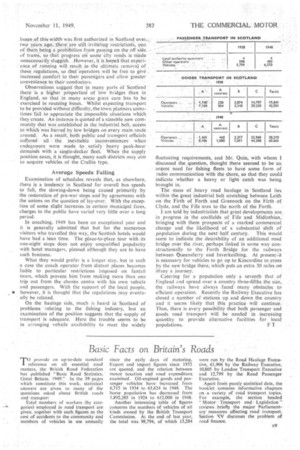Basic Facts on Britain's Roads
Page 87

If you've noticed an error in this article please click here to report it so we can fix it.
TO provIde an up-to-date standard reference on all essential road matters, the British Road Federation has published "Basic Road Statistics, Great Britain, 1949." In the 39 pans which constitute this work, statistical answers are given to many of the questions asked about British roads and transpori
Total numbers of workers (by categories} employed in road transport are given, together with such figures as the cost of accidents to the community and numbers of vehicles in use annually since the early days of motoring. Export and import figures since 1932 are quoted, and the relation between motor taxation and road expenditure examined. Oil-engined goods and passenger vehicles have increased from 6,715 in 1934 to 63,624 in 1948. The horse population has decreased from 1,892,205 in 1924 to 612,000 in 1948.
Another interesting table of figures concerns the numbers of vehicles of all kinds owned by the British Transport Commission, At the end of last year, the total was 98,794, of which 13,284
were run by the Road Haulage Executive, 61,906 by the Railway Executive, 10,805 by London Transport Executive and 12,799 by the Road Passenger Executive..
Apart from purely statistical data, the booklet contains informative chapters on a variety of road transport topics. For example, the section headed " Motor Transport and Legislation. reviews reviews .briefly the major Parliamentary measures affecting road transport. Section XV discusses the problem of road finance.
































































































































































































